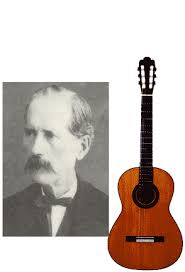History of the Guitar
This instrument has been around in
the music world for thousands of years. Scholars
debate on the specifics of when exactly the first
guitar was introduced in the world, and also what
ancient instrument the guitar most clearly drew
its roots from. Some scholars suggest that the
ancient lute, or even potentially the Greek
kithara could have been the instrument that the
guitar evolved from. Although, Dr. Michael Kasha
conducted some research in the 1960's that seemed
to disprove this hypothesis. He concluded that the
lute led to a separate line of instruments, having
similarities to the guitar, but not being the
direct ancestor.

http://www.mateus-lutes.com/renaissance.html
Many sources indicate that the guitar first
received notable recognition in the Mediterranean
area (places like Southern Europe, Northern
Africa, Spain, etc.) during the Renaissance time
period. During this time, these countries
introduced the guitar to many different regions of
the world while exploring and conquering different
parts of the earth. This is when the guitar truly
started to rapidly increase in popularity among
different cultures.
The guitar also has gone through several different
alterations throughout its lifetime to have made
it to where is truly is today. Very early guitars
started with only 4 strings and had a much
different body than what we see today with the
6-string guitar. After hundreds of years of
development, the 6-string guitar finally emerged.
Around 1832, Antonio Torres, a Spanish guitar
maker, increased the size of guitar, and increased
the amount of strings to 6. These alterations
radically improved both the sound quality and
loudness that could now be produced from the
guitar.

http://www.guitarinsite.nl/Geschiedenis_eng.php
|